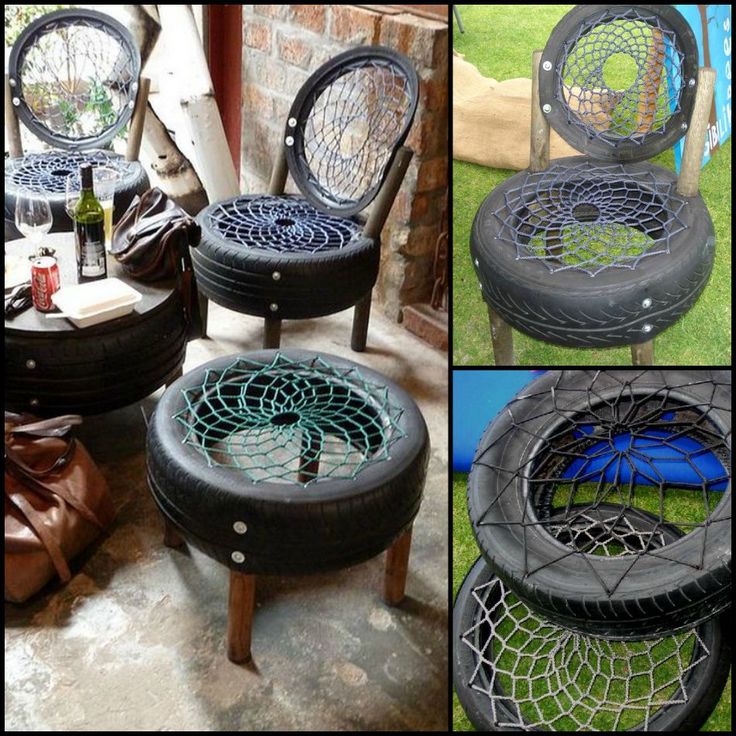Approximately three billion automobile tires were produced worldwide in 2019 alone. Automobile tires are the classic example of a high-volume product derived from non-renewable petroleum resources that is designed for single use; they do not fit the desired paradigm of reduce, reuse, recycle.
Some old tires are used as fuel in the cement industry or ground into rubber crumb and used as a reinforcing agent — parents will be familiar with the rubber mats used in children’s playgrounds.
These are inefficient ways to utilize a non-renewable resource. Problematically, many tires end up in tire landfills where they risk contaminating the local environment through leachate (the liquid that percolates through waste sites and into the ground) or worse, through fires that release toxic gases and particulate into the atmosphere.
On Dec. 20, 2019, a difficult-to-control fire broke out at the TRACC tire recycling plant in Minto, N. B., where approximately one million tires were stored. It took one week to put the fire out. Such fires aren’t uncommon: another notable tire fire happened 30 years ago, when 14 million tires in Hagersville, Ont., burned for more than two weeks.
In the 1840s, Charles Goodyear discovered a process called vulcanization that converts soft natural rubber into hard wearing rubbers. Vulcanization uses sulfur chains to bridge large organic molecules into a network, and is still widely used to produce automobile tires.
Prior to advances in automobile design, notably the advent of steel-belt and radial profiles 50 years ago, tires would need to be replaced after 20,000 to 40,000 kilometres. We now expect tires to last 100,000 kilometres. That reliability on the road makes tires extremely difficult to recycle.
In my lab, the Brook Research Group at McMaster University, we have discovered an efficient and mild process that uses silicone chemistry to break the sulfur-to-sulfur bonds that hold tires together.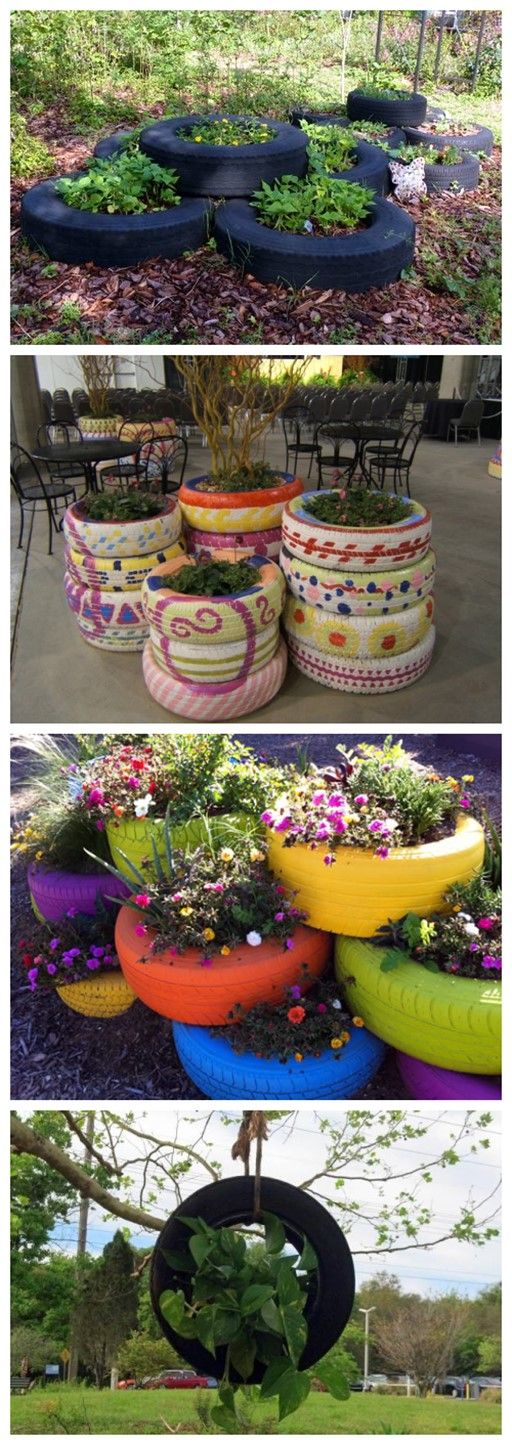 The silicones selectively cut the sulfur-sulfur connections, leaving only organic chains that can be easily isolated and reused to create new products. This process, originally designed to make new silicones using very small quantities of a catalyst, has been repurposed to address the sustainability of petroleum-based tires.
The silicones selectively cut the sulfur-sulfur connections, leaving only organic chains that can be easily isolated and reused to create new products. This process, originally designed to make new silicones using very small quantities of a catalyst, has been repurposed to address the sustainability of petroleum-based tires.
The chemical process first involves cutting tires into sections and then forming powdered crumb from them, steps that are currently used in commercial tire recovery plants. Then, a mild, rapid reaction produced by heating this material with specific silicones at 100C for 45 minutes converts about 90 per cent of the available organic materials into a readily processed pale yellow oil. The remaining substances — such as inorganic carbon, silica, metal and polyester cord fibres — are readily removed by filtration.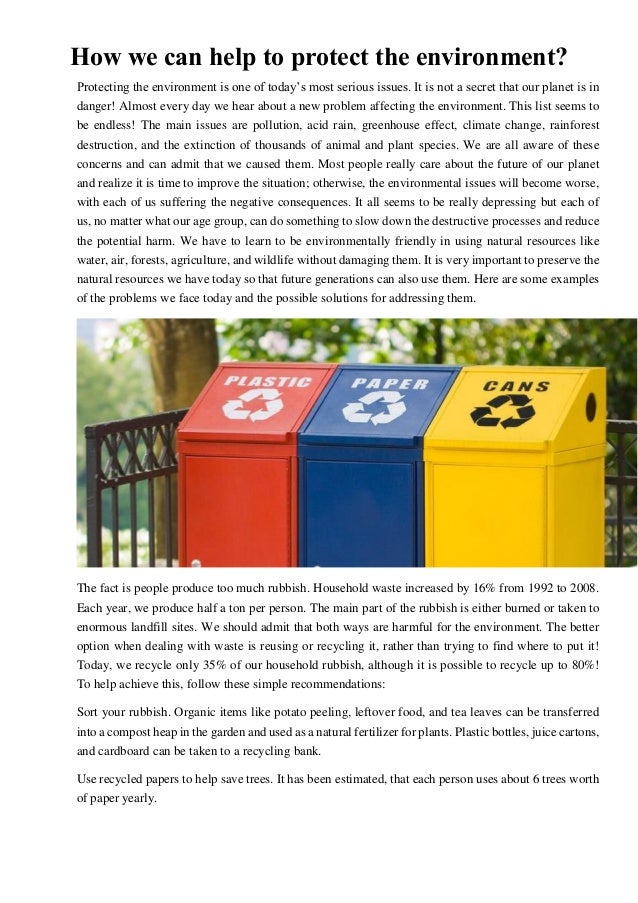
The oils recovered from used tires are very similar in constitution to the virgin polymers initially used to make new tires. My lab has also demonstrated that they can be repurposed.
In one instance, the recovered polymers were converted back into new rubbers, as shown above with the tire of the model toy car. The inorganic residue, initially removed by filtration, could also be reused as a reinforcing agent in the new rubber.
There is more work to be done. We need to better establish the range of products that can be made from the recovered polymers and reduce the quantity of catalyst needed to improve the economics of the process.
The overall process offers an opportunity to close the loop on automobile tires, as the rubber can be efficiently degraded and then reused to make other useful materials. It provides a new strategy to re-purpose the valuable materials in used tires and simultaneously address a perplexing environmental problem.
[ Expertise in your inbox.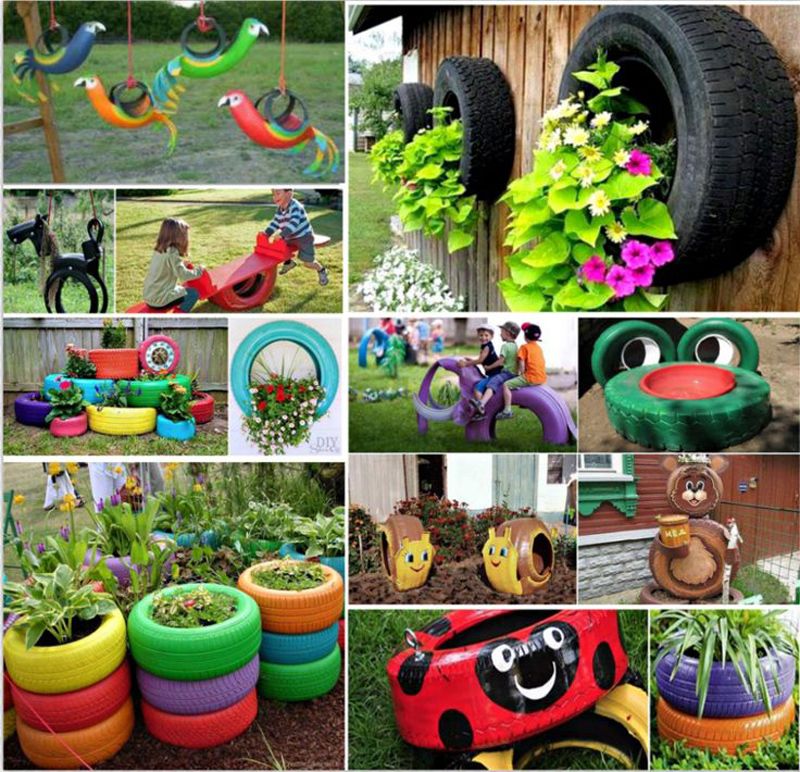 Sign up for The Conversation’s newsletter and get a digest of academic takes on today’s news, every day. ]
Sign up for The Conversation’s newsletter and get a digest of academic takes on today’s news, every day. ]
CalRecycle estimates that in 2018, Californians generated 51.1 million waste tires. From 2017 to 2018 waste tire diversion increased from 76.2 to 82.3 percent and recycling increased from 33.7 to 36.6 percent (recycling rate excludes alternative daily cover and tire-derived fuel). Additional data can be found in the California Waste Tire Market Report for 2018.
The California Tire Recycling Act authorized CalRecycle to award grants and loans to businesses and public entities for activities that could expand markets for used tires. The act specifically lists several types of projects: polymer treatment, crumb rubber production, retreading, shredding, and the manufacture of such products as rubber asphalt, playground equipment, crash barriers, erosion control, floor and track surfacing, oil spill recovery, roofing, and other environmentally safe applications. Grants are intended to fund research projects, to encourage business development, and to assist local government in implementing collection, outreach, and public education programs.
Grants are intended to fund research projects, to encourage business development, and to assist local government in implementing collection, outreach, and public education programs.
In addition, staff determined that the primary focus of the Five-Year Plan for the Waste Tire Recycling Management Program (biennial update for fiscal years 2017/18 through 2021/22) would be to build a sustainable statewide market infrastructure for tire-derived products. A solid market infrastructure for rubberized asphalt concrete (RAC), tire-derived aggregate (TDA) in civil engineering applications, rubber mat and cover products, and the development of new tire-derived products is essential to divert the remaining tires still being landfilled or disposed of illegally.
In order to make these markets sustainable, a steady flow of materials into the marketplace, sufficient capacity, diverse product lines, and continuous viable uses for products must also exist. The activities identified in the Five-Year Plan are designed to help enhance and solidify the infrastructure that manages waste tires from generation to end-product, through partnership with local jurisdictions, the private sector, and other State agencies.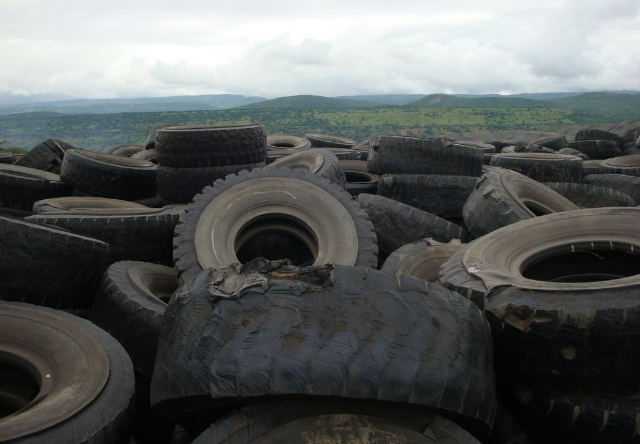 Building strong sustainable markets in California can increase the intrinsic value of waste tires as a raw material, diminishing the current economic advantage of landfilling tires. (See Products and Uses.)
Building strong sustainable markets in California can increase the intrinsic value of waste tires as a raw material, diminishing the current economic advantage of landfilling tires. (See Products and Uses.)
The ongoing challenge for CalRecycle is to continue to develop viable markets for the remaining 8.5 million waste tires that are being landfilled annually to achieve the California’s zero waste goals with respect to tires. CalRecycle is dedicated to finding new uses for this valuable resource and is committed to working cooperatively with local governments, industry, and the public to reach this goal.
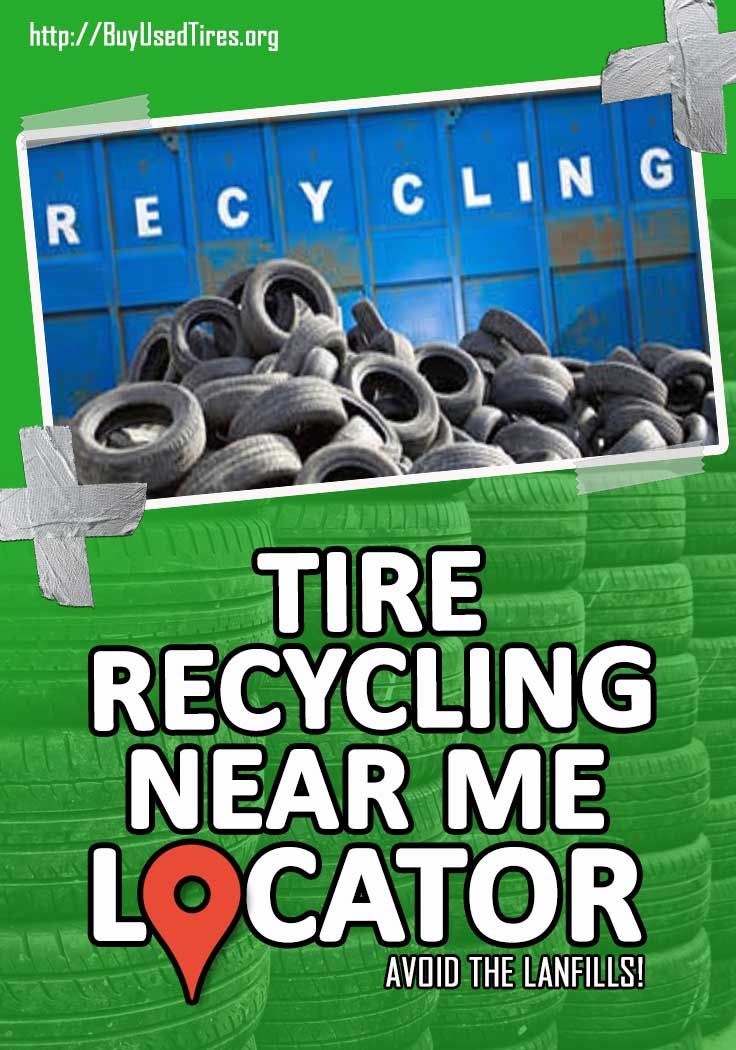
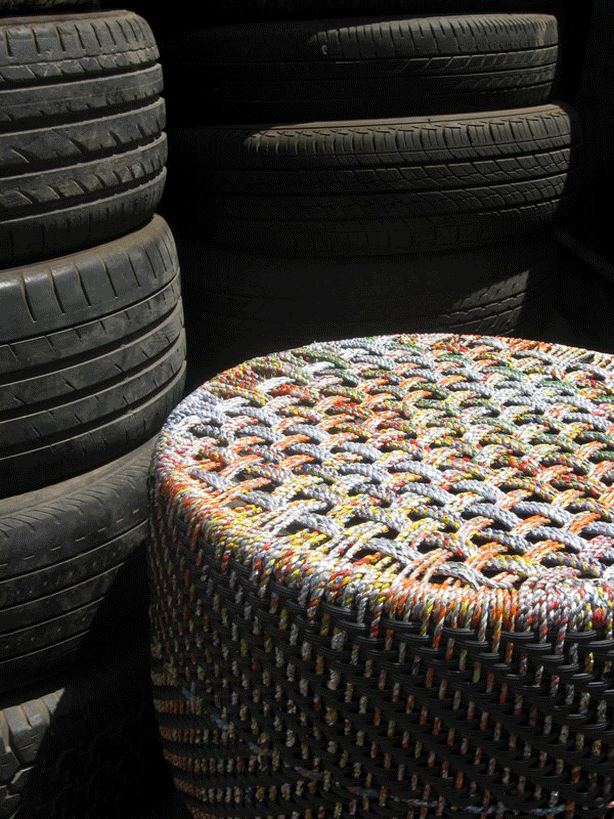 The California Resource Recovery Association, the Northern California Recycling Association, and the Californians Against Waste are three leading California recycling advocacy groups.
The California Resource Recovery Association, the Northern California Recycling Association, and the Californians Against Waste are three leading California recycling advocacy groups.The operation of motor vehicles, special equipment is associated with the constant generation of waste. Worn tires must be disposed of. The special composition of rubber, the multicomponent structure of the cord will become a real problem for nature, if you just throw the products into a landfill. Previously, unclaimed products were recovered, reused in the production of tires or thrown into landfills. Today, more competent recycling is carried out using advanced technologies.
Most of the materials obtained from tire recycling are recycled in various industries. This reduces recycling costs and also avoids the disposal of large amounts of residual materials in landfills.
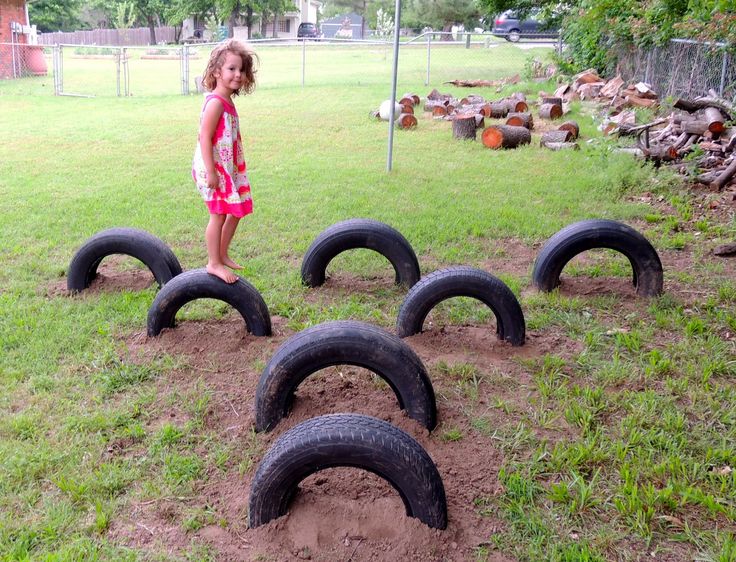
Such waste belongs to hazard class IV. They process pneumatic tires, products for cars, bicycles, mopeds, motorcycles. Also, massive rubber products from special equipment, mining dump trucks are sent for processing. Work with different products is based on an individual plan. For example, studded tires must first be cleaned of metal elements, which are processed separately.
Features of these types of waste:
Environmental organizations claim that almost half of the microplastics in the world's oceans are the result of improper tire recycling.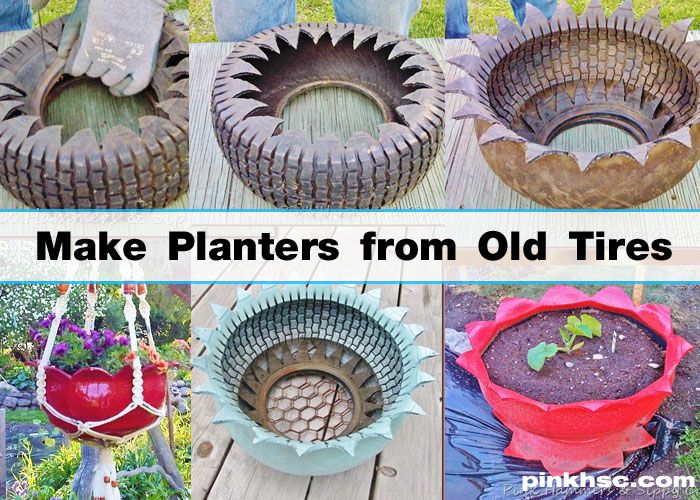 Proper disposal of cars and their components is becoming an important criterion for cleaning the environment from harmful substances that change the ecosystem and do not stop the trend of deterioration in the living conditions of living beings on the planet.
Proper disposal of cars and their components is becoming an important criterion for cleaning the environment from harmful substances that change the ecosystem and do not stop the trend of deterioration in the living conditions of living beings on the planet.
Need advice or assistance in evaluating services?
Ask us any question! - we know everything about what we offer!
In order to dispose of tires in Moscow and on the territory of the Russian Federation, an enterprise needs to obtain a license to work with hazardous waste. The price of taking tires for recycling depends on the amount of waste, the type of rubber, and the complexity of transportation. Penalties apply for misuse of such materials. Environmental sanctions in Russia are tightened every year, companies face various sanctions up to and including the suspension of activities for gross violation of the rules.
Proper recycling includes several steps:

Whereas in the past almost the entire volume of waste was taken to landfills, today the share of the product sent to landfill has become insignificant. For recycling services, modern equipment is used, which allows you to dispose of materials without residue. Specialists are finding more and more areas for the secondary use of the residual product. The price of recycling services is reduced due to the sale of recycled materials, but the cost of materials does not fully pay for the recycling process.
Specify the cost of recycling car tires in Moscow and the Moscow region in the company "Crystal of Purity". We work on a modern industrial complex and guarantee the full processing of unclaimed materials. We accept waste of different hazard classes, we offer democratic prices. Call the company's managers to get advice and order the preparation of the contract.
 The output is three products0001
The output is three products0001 Waste tires and tires harm not only the environment, but also people. Scientists from Tomsk Polytechnic University have found a new, environmentally friendly and cost-effective way to recycle tires. A unique technique using water allows not only to dispose of hazardous waste, but also to obtain useful products at the output - frost-resistant fuel oil and gas.
Garbage disaster
According to the UN, today the total amount of garbage in the world is replenished by 4 billion tons per year. Approximately 70% of all waste is taken to landfills. This leads to systemic and irreversible changes. At the same time, in the next 10 years, the volume of waste entering waterways and oceans will reach 58 million tons per year. And even this is “good” news, as such an assessment takes into account thousands of ambitious commitments from governments and industry to reduce hazardous waste pollution.
Without any improvement in waste management, by 2030, 99 million tons of garbage will be released into the environment. What does this mean for nature and man? Fresh water will be polluted, animals important to the food chain will die out, and ecosystems on which humans depend will be destroyed.
What does this mean for nature and man? Fresh water will be polluted, animals important to the food chain will die out, and ecosystems on which humans depend will be destroyed.
An unobvious but dangerous problem
Road transport is essential for the functioning of social production and people's lives. However, it is also the main source of environmental pollution. It accounts for up to 60-80% of environmental pollution, and in areas with the highest concentration of people - up to 90–95%. During the operation of vehicles, a large amount of waste is generated. According to studies, worn-out car tires are the most dangerous among them.
The chemicals from landfilled tires are released into the environment and decompose into hazardous waste: they contain oils that contaminate the soil and heavy metals such as lead accumulate in the environment over time. Another major concern with discarded tires is the increased fire hazard. Tire fires are harder to control.
Thus, hundreds of soldiers and firefighters could not put out the largest of them at the Al-Sulabia tire dump for a month: all this time, poisonous smoke poisoned the air of nearby settlements. More than five million tires burned as a result. The incident was declared an "environmental disaster" because the smoke from the fires was visible even from space.
Car tires are made from various rubber compounds, the composition of which each manufacturer keeps in the strictest confidence. But in any case, its basis is synthetic rubber, which is obtained from oil - an extremely flammable material.
Tire smoke contains toxic chemicals and particulate matter that are harmful to human health. When released into the atmosphere, they cause a worsening of respiratory diseases - not only the severity of their manifestation, but also the number of cases of occurrence.
According to a report by the World Health Organization (WHO), as of the beginning of the 2010s, 1.3 million deaths worldwide are related to air pollution. A few years later, this figure tripled to 3.7 million people. Air pollution is now responsible for 4.5 million premature deaths per year worldwide. The problem not only exacerbates respiratory diseases, but also causes them, such as chronic obstructive pulmonary disease, asthma and lung cancer. Air pollution also causes and exacerbates diseases of the heart, nervous and digestive systems.
A few years later, this figure tripled to 3.7 million people. Air pollution is now responsible for 4.5 million premature deaths per year worldwide. The problem not only exacerbates respiratory diseases, but also causes them, such as chronic obstructive pulmonary disease, asthma and lung cancer. Air pollution also causes and exacerbates diseases of the heart, nervous and digestive systems.
Only in Russia more than 60,000 people die from lung cancer every year, which is more than 20% of all deaths from malignant neoplasms. In the structure of cancer mortality in men, lung cancer is more than 31%. Globally, air pollution is responsible for 29% of all lung cancer cases and about a quarter of deaths from heart disease and stroke.
Why are tires not recycled but thrown away?
When tires become unusable, car owners have two options - throw them in a landfill or recycle them. For example, you can take the tires to a tire shop. If they take it, it is almost a guarantee that they will be sent for processing. By the way, there was an initiative to place recognizable banners at those tire shops that work directly with companies that dispose of this type of garbage. The inscription on it will be something like this: "We hand over where necessary." The problem is that not every tire shop has a point of sale.
By the way, there was an initiative to place recognizable banners at those tire shops that work directly with companies that dispose of this type of garbage. The inscription on it will be something like this: "We hand over where necessary." The problem is that not every tire shop has a point of sale.
To make matters worse, few companies are willing to recycle used tires: they are very difficult to dispose of. Recycling requires a huge amount of energy - it is not only economically unprofitable, but also not environmentally friendly.
There is a solution - but not perfect
Tire recycling helps keep harmful chemicals out of the ground, water and air. There are several ways. The simplest and most dangerous for nature and man is burning. This method cannot be called environmentally friendly. Waste from the auto industry is not reused, but only exacerbates the problem of global warming due to the accumulation of greenhouse gases in the Earth's atmosphere.
A more environmentally friendly, but, unfortunately, less common method of processing is pyrolysis, heating without oxygen. With this technology, tires are placed in special chambers and sealed. The temperature in this process reaches thousands of degrees. Rubber without access to oxygen begins to decompose, and as a result, raw materials are obtained, which are later used in industry. Today, such technology is used by China and the United States.
Is there an alternative?
Trying to solve the problem, scientists from the Energy Engineering School of Tomsk Polytechnic University have proposed an alternative way to recycle tires - steam gasification.
The essence of the method lies in the fact that in a specially designed installation, recyclable materials are treated with superheated water vapor. Of course, before work, you must first grind the tire. The method of steam gasification proposed by Tomsk scientists turned out to be much more budgetary and more efficient than the widespread pyrolysis.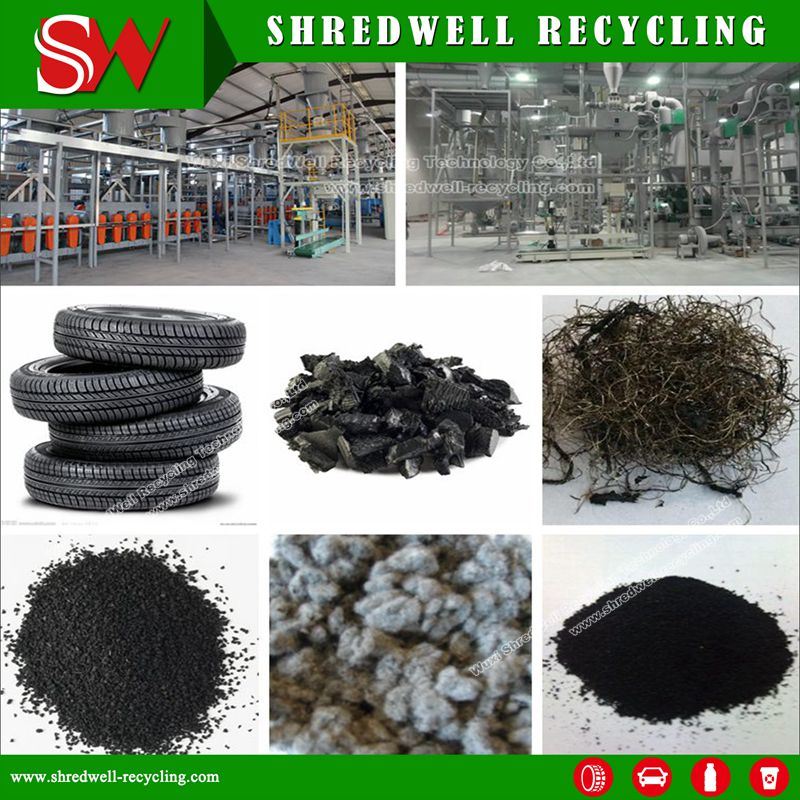
In fact, this is a simpler and safer processing technology, unlike those that already exist. The steam gasification process does not require too high temperatures and high pressures, as for pyrolysis - the new method is much more environmentally friendly. Also, the process is characterized by high speed - crushed tires are processed in an hour in the reactor.
Another benefit of the new technology is that recycled tires are turned into gas. By the way, it can be immediately used for the production of new tires. In addition, Tomsk scientists managed to obtain environmentally friendly, and, importantly, frost-resistant fuel oil.
Laboratory experiments have shown that it does not freeze or lose its properties even at -50°C. The reason for this success is low viscosity. This means that it already has the properties of an arctic fuel. Considering that the territory of Russia includes large areas of the Far North, this is an important bonus. Such fuel oil is environmentally friendly due to the absence of sulfur in it.